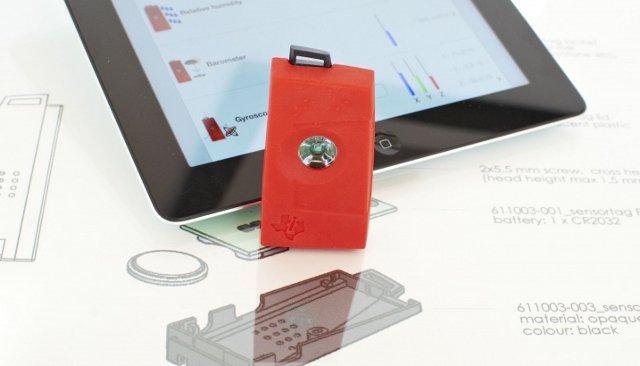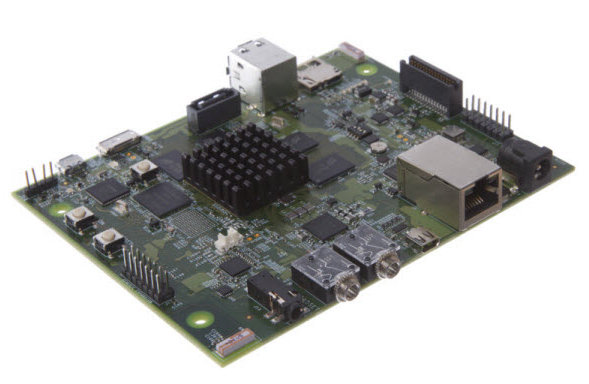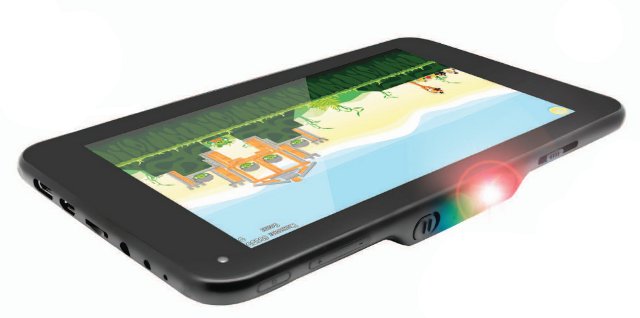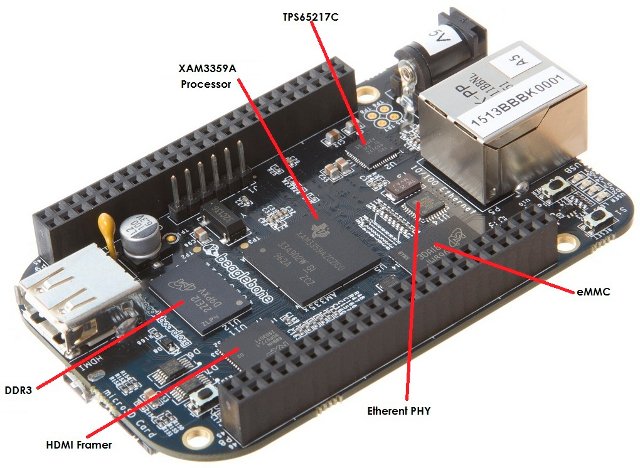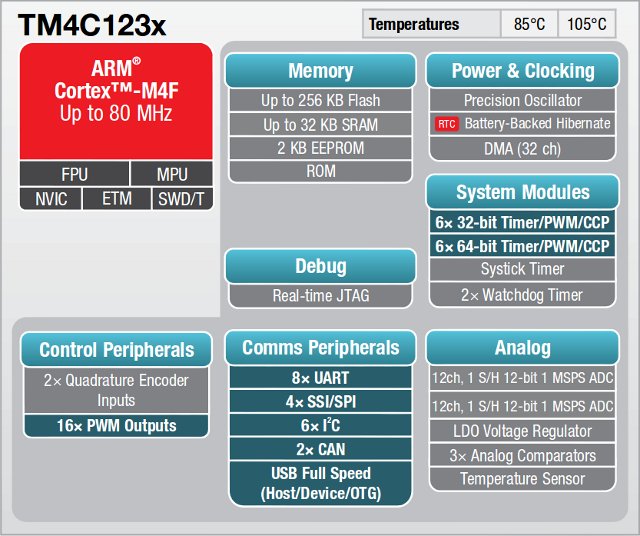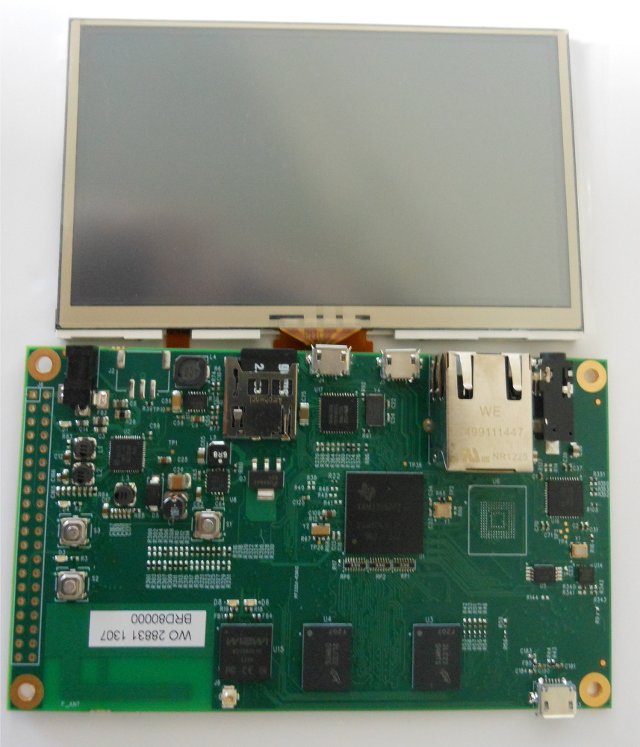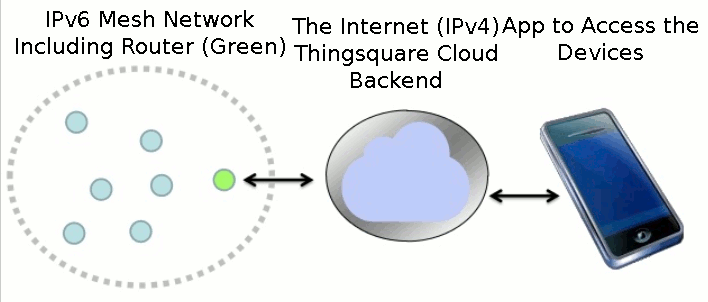Yesterday, I wrote about Wimoto Motes, tiny Bluetooth LE devices with several sensors that can be controlled and monitored via an iOS app, and soon by an Android app, as well as Linux devices. Each mote costs $39 plus shipping, and one commenter mentioned the price may be a bit too high. A Google search for “bluetooth sensor” immediately brings TI SensorTag, which looks somewhat similar, except it is a Bluetooth LE development kit, includes 6 sensors (but no light sensor), and only costs $25 including shipping. SensorTag Specifications: Bluetooth 4.0 low energy (CC2541) SoC 6 sensors connected via I2C: IR Temperature sensor (TI TMP006) Humidity sensor (Sensirion SHT21) Pressure sensor (Epcos T5400) Accelerometer (Kionix KXTJ9) Gyroscope (InvenSense IMU-3000) Magnetometer (Freescale MAG3110) Power – Single cell coin cell battery (CR2032), quiescent current consumption of 8uA, allowing years of battery life. FCC, IC and ETSI certified solution Dimension – 71.2x36x15.5 mm, […]
$329 Texas Instruments OMAP5432 EVM / Development Board
Earlier this month, Texas Instruments has apparently discreetly, not to say surreptitiously, launched their OMAP5432 evaluation module. Beside the dual Cortex A15, dual Cortex M4 OMAP5 SoC, the board comes with 2GB RAM, a 4GB eMMC module, USB 3.0, SATA and more. OMAP5432 EVM Specifications: SoC – Texas Instruments OMAP5432 Multicore ARM Cortex A15/M4 processor with PowerVR SGX544MP2 GPU System Memory – 2GB DDR3L (implemented using 4x Micron 4Gb DDR3L devices (MT41K256M16HA-125:E) Storage – 4GB EMMC/iNAND Ultra device + SD/MMC 4-bit Micro-SD card cage Display / Video: HDMI via native OMAP HDMI interface DSI Display Expansion (DSIPORTA and DSIPORTC) via 100-pin expansion connector Parallel Display Expansion (DPI) via 100-pin expansion connector Audio – Audio Jack 3.5mm, Stereo out & in, Headset Jack (earphone/microphone) USB – 3x USB HS 2.0 (2 via USB connector, one via 0.1″ header), 1x USB 3.0, and 1x USB OTG 2.0/3.0 Connectivity – 10/100 802.3u Ethernet. […]
Promate LumiTab Android Tablet Features a DLP Pico-Projector
Back in 2011 & 2012, we saw some Android products with a pico-projector, including a lightbulb running Android, but pico-projectors never really seemed to be embedded into consumers products. Promate, however, decided to add one of those to one of their Android tablets. Promate Lumitab would just be a typical Android 4.2 tablet with a 7″ touchscreen, a dual core processor (OMAP4460), 1GB RAM, 16GB flash, if it did not also come with a DLP pico-projector capable of outputting an image up to 100″ (254 cm). Promate Lumitab Specifications: SoC – TI OMAP4460 Dual-core ARM Cortex-A9 @ 1.5GHz + PowerVR SGX540 GPU System Memory – 1GB LPDDRII RAM Storage – 16GB flash, and a microSD slot Display – 7-inch IPS display (1024×600) Video Output mini HDMI Pico-projector DLP technology 854×480 (WVGA) resolution. 35 Lumens, Projection size of more than 100 inches, and projection ratioof 1.5 Audio I/O – 3.5mm stereo […]
BeagleBone Black Features 1GHz Texas Instruments Sitara SoC, HDMI, and More Memory
We’ve already known that a new, faster and cheaper BeagleBone is on the way for a little while, but very few details were provided at the time. There are now better pictures, the specifications are available, and it looks like the new BeagleBone will be called BeagleBone Black. BeagleBone Black Specifications: SoC – Texas Instruments Sitara AM3359AZCZ100 Cortex A8 @ 1 GHz + PowerVR SGX530 GPU System Memory – 512 MB DDR3L @ 400 MHz Storage – 2GB eMMC + micro SD slot USB – USB0 (client mode) via mini USB, USB1 (host) type A socket Serial Port – UART0 via 3.3V TTL header Ethernet – 10/100, RJ45 Video Output – micro HDMI with EDID support, up to 1280×1024 resolution. Audio Output – Via HDMI Expansion Connectors – Power, McASP0, SPI1, I2C, 65x GPIOs, LCD, GPMC, MMC1/2, 7x AIN (1.8V MAX), 4x timers, 3x serial ports, CAN0, EHRPWM0/2, XDMA interrupt, […]
Texas Instruments Announces Tiva Cortex M4 MCUs and $12.99 LaunchPad Evaluation Kit
Texas Instruments has just announced the Tiva ARM MCU platform, and specifically the Tiva C Series TM4C123x ARM Cortex-M4 MCUs, which are the first Cortex-M MCUs to be built on 65 nanometer flash process technology. The Tiva C Series TM4C123x MCUs, formerly known as Stellaris LM4F MCUs, are available now and target home, building and industrial automation. Key features and benefits of Tiva C Series MCUs: MCU Core – ARM Cortex-M4 floating-point core, operating at up to 80 MHz. Mixed-signal applications with high-performance analog integration – 2×12-bit ADC and 3 comparators.12-bit ADC accuracy is achievable at the full 1 MSPS rating without any hardware averaging. On-chip connectivity options – USB (host, device and On-The-Go), UARTs, I2C, SSI/SPI, CAN, etc.. Non-volatile storage of user interface or configuration parameters to reduce system cost – Thanks to integrated EEPROM. Low power – Standby currents as low as 1.6 uA. Large choice of MCU […]
Gumstix Unveils $249 Pepper Single Board Computer Powered by TI Sitara AM3359
Gumstix has just announced a new single board computer for Linux embedded development and experimentation. Pepper is powered by Texas Instruments Sitara AM3359 Cortex A8 processor, and comes with 512MB DDR2, WiFi and Bluetooth connectivity, a 4.3″ LCD touchscreen and more. Gumstix Pepper Key features: Processor – Texas Instruments Sitara AM3359 Cortex A8 processor up to 720 MHz System Memory – 512MB DDR2 Storage – microSD card slot (No flash) Connectivity: Wifi – 802.11 b/g/n 10/100/1000M Ethernet Bluetooth 3.0 Display – Samsung 4.3″ LCD resistive touchscreen (480 x 272) USB – 2x USB OTG connectors Expansion headers – For I2C, SPI and UARTs GPIO-controlled push buttons and LEDs Sensors – 3D Accelerometer (ST LIS33DE) Power – 5V Since there’s no flash, a microSD is used to boot the board. Gumstix provides a Linux distribution built with the Yocto Project which you” eventually be able to download here (the page is […]
Thingsquare Mist – Open Source Firmware for The Internet of Things
Thingsquare recently released the source code for the Thingsquare Mist firmware, an ultra lightweight router software (<4 kB memory) for the Internet of Things based on open Internet standards such as IPv6, RPL (Routing Protocol for Lossy networks), and 6lowpan. Thingsquare Mist allows to connect battery-powered wireless micro-controllers to the Internet, and is currently used in applications such as smart light bulbs, connected home appliances, and connected cities. The IPv6 mesh network is composted of nodes with a low power radio that communicate with the Mist router (Green), which in turn connect to the Internet and Thingsquare Cloud backend (Thingsquare Haven) to store the data, and/or receive control commands via Ethernet or Wi-Fi. The end users can then use an App to monitor, and/or control the devices remotely. Thingsquare Mist uses IETF RPL IPv6 mesh routing protocol (pronounced “ripple”) for IPv6 nodes communications. Thingsquare Mist runs on several low-power wireless […]
ISEE Introduces IGEP COM CYGNUS & AQUILA Powered by TI Sitara AM335x Processor
ISEE will officially launch and showcase 2 new computers-on-module at Embedded World 2013 on February 26-28, in Nuremberg, Germany: IGEP COM CYGNUS and IGEP COM AQUILA. Both CoM shares the same characteristics except the former is powered by TI Sitara AM3352 (Cortex A8, no GPU) and the later by TI Sitara AM3354 (Cortex A8 + PowerVR GPU). This makes the CYGNUS suited for cost sensitive applications such as industrial control, home automation, and test and measurement devices, and the AQUILA for applications that requires more advanced graphics and multimedia capabilities such as gaming, auto infotainment and navigation devices. The key specifications of the 2 modules are as follows: Processor – Texas instruments Sitara AM3352 Cortex A8 @ 720 Mhz (CYGNUS) and AM3354 Cortex A8 @ 720 Mhz + PowerVR SGX GPU (AQUALIA) System memory – 256 MB DDR3 SDRAM, 303 MHz, 16-bit Storage – 128 MB SLC NAND FLASH + […]


